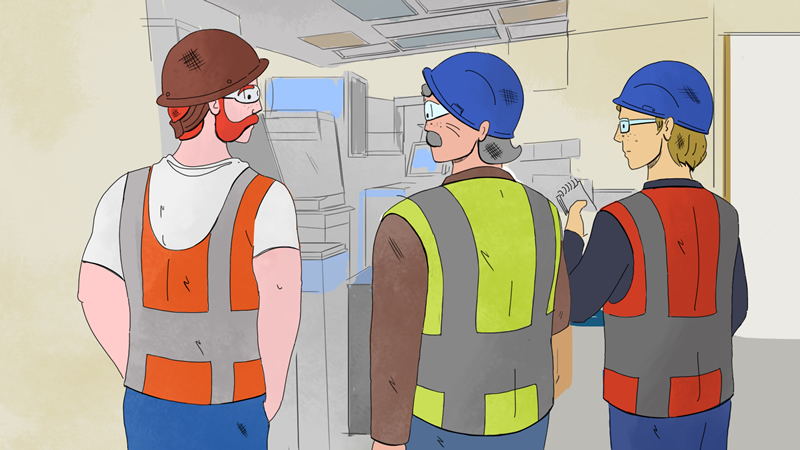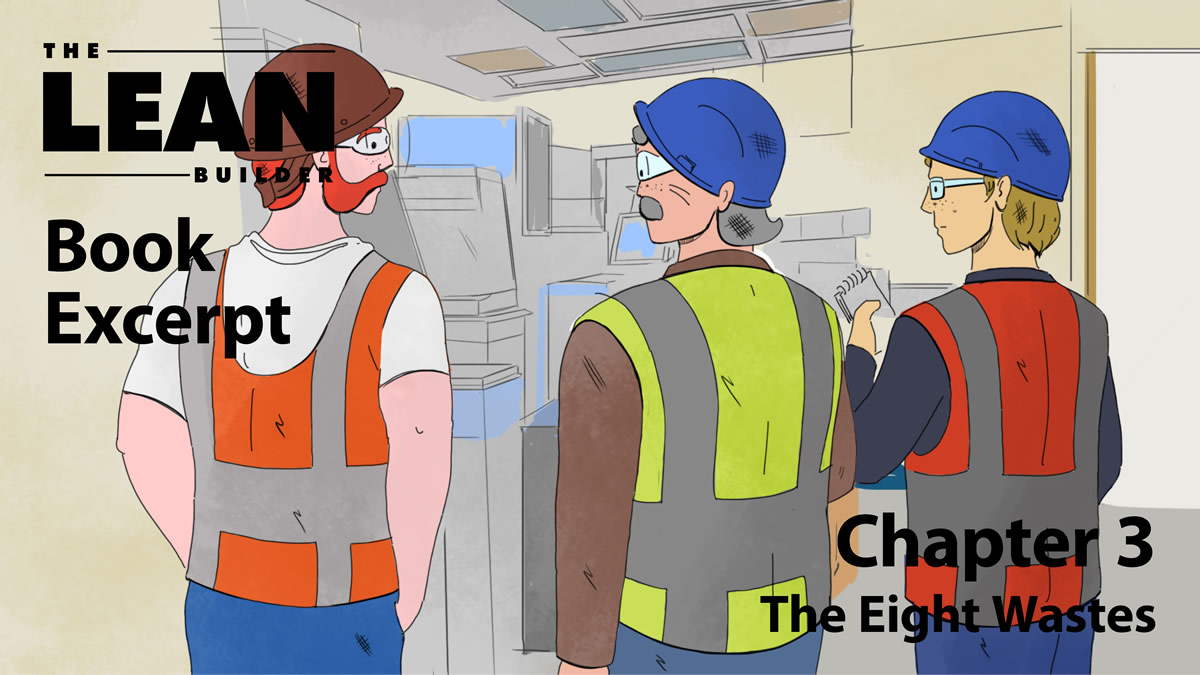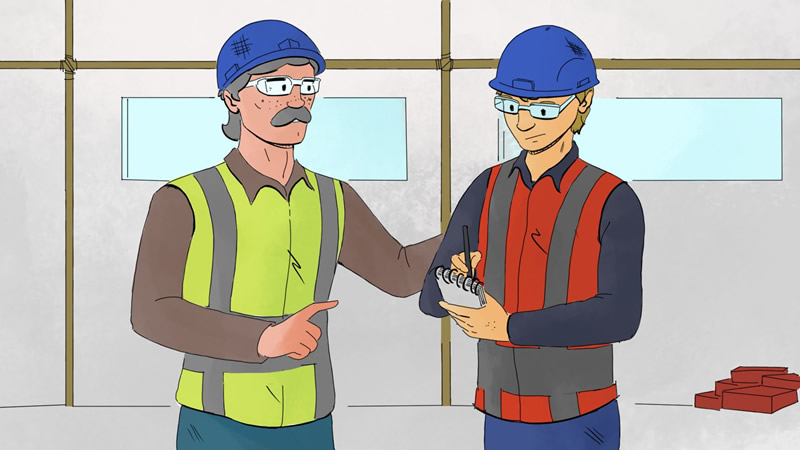This week, we’re sharing an excerpt from our book The Lean Builder: A Builder’s Guide to Applying Lean Tools in the Field. In chapter 3, “The Eight Wastes”, Alan teaches Sam just how detrimental waste can be on the jobsite.
Waste can be defined as any task that does not add value. Unfortunately for the construction industry, many of the activities performed in the design and construction industry are non-value-added activities, or waste. The first step to overcoming the wasteful issues that plague your jobsite is being able to recognize and identify The Eight Wastes of Lean. This empowers you to pinpoint the root cause of your issues much faster, thereby allowing you to resolve constraints and challenges more effectively without getting sidetracked by the noise surrounding the issues.
We hope you enjoy!
The Eight Wastes of Lean
As Sam and Alan were walking up the stairs to the second floor, Alan turned to Sam and asked. “Hey, Sam, have you ever heard of the ‘Eight Deadly Wastes’ on a jobsite?”
Sam stopped walking and thought for a moment. He felt like he should know the answer, but he didn’t. “Does this have something to do with asbestos?”
Alan chuckled. “No, but good try! Have you ever heard someone use the acronym D.O.W.N.T.I.M.E.?”
He was sure he hadn’t. “No. What’s that?”
“The word ‘downtime’ helps you remember the ‘Eight Wastes’. It goes like this. The first one is D for Defects, which has to do with materials that have been damaged or made incorrectly. These materials will have to be reworked or scrapped, and that’s waste. Waste is anything that doesn’t add value—or, to put it this way, waste only ADDS time and cost to your project. Make sense?” Alan asked.
“Yes,” said Sam, who had begun to write this down in his notepad.
“The second waste starts with O, which represents Overproduction,” Alan continued. “Overproduction is building something too soon, having too much of something already built, or building something quicker than is needed.” As Sam was writing, he began to think back to Hank’s call last week about the ductwork for the second floor, and grimaced.
Alan leaned against the wall and propped one foot on the stairs. “The third waste starts with W and looks like this,” Alan said, gesturing towards himself with both thumbs.
Sam looked up at him. “Waiting?”
Alan nodded. “Yep. Waiting is pretty straightforward, right? Any time that work is not able to be done because of the impacts from any of the other wastes, you’ll experience waiting.”
Sam nodded and kept writing.
“Fourth—and my personal pet peeve—is the N, which represents Non-Utilized Talent.” Alan said, shaking his head. “Any time a tradesman has to address one of the Eight Wastes instead of focusing on their skilled craft, they are being pulled away from their true potential and the role that brings the most value to the project.
“Fifth on the list is T, the Transportation waste. This is the unnecessary movement of materials. The time it takes for materials to be transported from one location to another is considered waste—and on top of that, it becomes more likely for those materials to be damaged, taking us back to where we started, with defects.”
 Alan nudged Sam and pointed out the window. Hank’s guys were beginning to load up a bundle of the damaged ductwork.
Alan nudged Sam and pointed out the window. Hank’s guys were beginning to load up a bundle of the damaged ductwork.
“The sixth waste is I, for Inventory,” Alan continued. “Having inventory may not seem like a bad thing at first, but having too much of something on a jobsite can be extremely detrimental to the flow of work. It’s also a lot of money sitting on your job that could ‘walk away,’ if you know what I mean. And it increases the likelihood that it will need to be moved or can end up being damaged, starting the Eight Wastes cycle over again.”
Sam flipped the page in his notebook, and Alan went on. “M, for Motion, is the seventh deadly waste. Motion involves movement by craftsman. Even what seems like a small, non-value-added motion can cost your project. For example, Sam, you’ve done a great job conveniently placing your port-o-johns so the guys can access them near the building. Now, imagine if you placed them on the opposite side of the parking lot. How much wasted motion would that create for the guys who’d have to go back and forth throughout the day, just to take a leak?
“And, finally, we have E. Excess is the eighth waste. You should think of excess as over-processing something. Anytime you need to rework, rebuild, or redesign, you are experiencing excess processing, which adds no value and only contributes to the other wastes. Excess processing can stem from lots of different situations.”
Alan waited for Sam to finish his notes before he spoke again. “It’s important that you recognize all of the Eight Deadly Wastes on a jobsite; otherwise, you can have serious issues when it comes to your schedule. Remember them with the D.O.W.N.T.I.M.E. acronym—Defects, Overproduction, Waiting, Non-Utilized Talent, Transportation, Inventory, Motion, and Excess.”
Sam’s mind was blown, and he was thankful for the benefit of Alan’s experience. He tucked his pad back in his pocket and smiled. “This is really good, Alan, thank you. I’ll practice watching for these.”
What does the D.O.W.N.T.I.M.E. acronym stand for?
Be sure and follow The Lean Builder authors Joe Donarumo and Keyan Zandy on LinkedIn!










